Mohs Surgery
Mohs Surgery: The Gold Standard for Skin Cancer Treatment at the Center for Surgical Dermatology & Dermatology Associates
Mohs surgery is the most effective treatment for many cases of squamous cell carcinoma and basal cell carcinoma, the two most common types of skin cancer. This precise procedure is performed under local anesthesia and involves surgically removing skin cancer layer by layer. Each layer is examined under a microscope in real time until only healthy, cancer-free tissue remains around the tumor.
At the Center for Surgical Dermatology & Dermatology Associates, our Mohs surgeons are specially trained as cancer surgeons, pathologists, and reconstructive surgeons. This comprehensive expertise results in Mohs surgery having the highest success rate of all skin cancer treatments, with cure rates approaching 99 percent. The meticulous nature of the procedure ensures complete cancer removal while preserving as much healthy tissue as possible, minimizing scarring and optimizing cosmetic outcomes.
The benefits of Mohs surgery are significant, including its high cure rate, precise removal of cancerous tissue, and minimal impact on healthy surrounding tissue. This technique is particularly beneficial for skin cancers located in cosmetically sensitive areas, such as the face, ears, and neck.
Experience the superior care and expertise of our Mohs surgeons at the Center for Surgical Dermatology & Dermatology Associates. If you have been diagnosed with skin cancer, schedule a consultation with our highly trained specialists to discuss whether Mohs surgery is the right treatment for you. Let us provide you with the best possible outcomes for your skin health and overall well-being.
Examples of Mohs Surgery
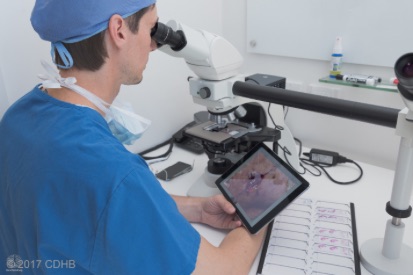
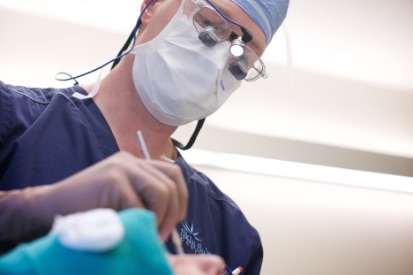
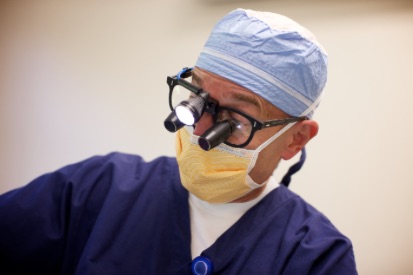
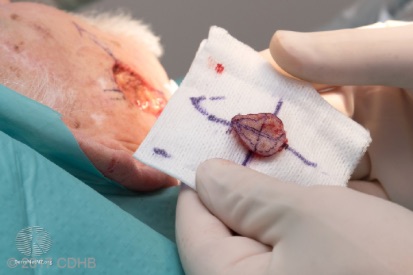
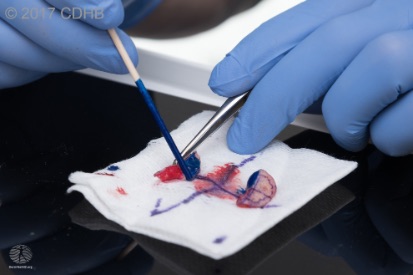
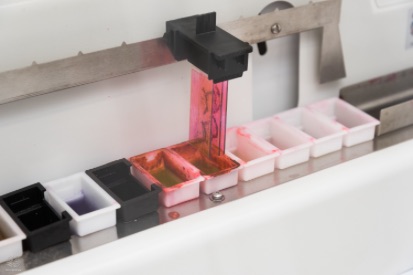
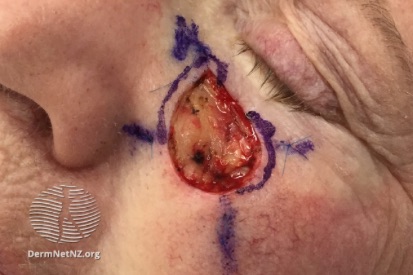
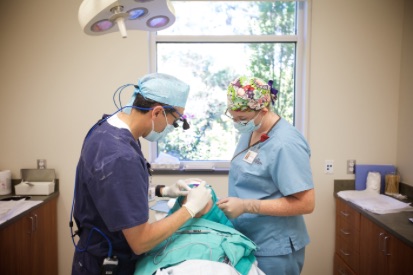
What is Mohs Surgery?
This technique allows dermatologists, trained in Mohs surgery, to see beyond the visible disease, and to precisely identify and remove the entire tumor, leaving healthy tissue unharmed.
This procedure is most often used in treating three of the most common forms of skin cancer: melanoma, basal cell carcinoma and squamous cell carcinoma.
What are the Benefits of Mohs?
How the Center for Surgical Dermatology & Dermatology Associates Can Help
Mohs Surgery: The Highest Cure Rate for Skin Cancer at the Center for Surgical Dermatology & Dermatology Associates
According to statistics reported by the American College of Mohs Surgery, “Mohs micrographic surgery has the highest cure rate of all treatments for basal cell and squamous cell skin cancers,” with a cure rate exceeding 99 percent for new skin cancers and 95 percent for recurrent skin cancers.
At the Center for Surgical Dermatology & Dermatology Associates, our board-certified Mohs surgeons specialize exclusively in Mohs surgery and related dermatological procedures. This focused practice allows them to refine their skills continuously and stay updated on the latest advancements in the field, ensuring the highest level of care for our patients.
Our commitment to your care is unwavering. Our Mohs surgeons undergo extensive training beyond medical school and residency, including specialized fellowships, to ensure you receive the most comprehensive skin cancer care available. This rigorous training and dedication to excellence enable our surgeons to perform Mohs surgery with precision and confidence, maximizing both the cure rate and cosmetic outcomes.
Choose the Center for Surgical Dermatology & Dermatology Associates for your skin cancer treatment and experience the exceptional care that comes with specialized expertise. Schedule a consultation with our expert Mohs surgeons today to discuss your treatment options and take the first step towards achieving optimal skin health and peace of mind.
Mohs Surgery FAQs
By using detailed mapping techniques and complete microscopic control, the Mohs surgeon can pinpoint areas involved with cancer that are otherwise invisible to the naked eye. Therefore, even the smallest microscopic roots of cancer can be removed. The result is:
- The removal of as little normal skin as possible,
- The highest possibility for curing the cancer.
No. Mohs surgery is performed in a pleasant outpatient surgical suite and you may return home the same day. Hospital facilities are available if necessary.
Your appointment will be scheduled early in the day. Our staff will escort you into a surgical suite where the surgeon will numb the area around the skin cancer. Once it is numb, the visible cancer and a thin layer of tissue will be removed. This tissue is carefully mapped and coded by the surgeon and taken to the adjacent laboratory where the technician will immediately process the microscope slides. You will have a temporary dressing placed over the wound and you will be free to return to the reception area.
The surgical procedure alone takes 10-15 minutes. However, it takes a minimum of 1 1/2 to 2 hours to prepare and microscopically examine the tissues of each layer. Several surgical stages and microscopic examinations may be required, and you will be asked to wait in the patient reception area between stages. Although there is no way to tell before surgery how many stages will be necessary, most cancers are removed in three stages or less.
We would like to make the time you spend with us as pleasant and comfortable as possible. You may want to bring reading material to occupy your time while waiting for the microscope slides to be processed and examined. You may want to bring a sweater, as the temperature in our office varies. Magazines and beverages will be available in the reception area. If your visit extends through the lunch hour, your companion may visit the hospital cafeteria and bring you a snack or lunch since you are asked not to leave the reception area of our office.
The most difficult part of the procedure is waiting for the results from the laboratory. Since we do not know in advance how much time is necessary to remove the cancer and repair the wound, we ask that you plan to be in the office the entire day and that you make no other commitments. Please be sure to inform your companion and/or driver of this.
Yes. Any form of treatment will leave a scar. However, because Mohs surgery removes as little normal tissue as possible, scarring is minimized. Immediately after the cancer is removed, we may choose (1) to leave the wound to heal itself, (2) to repair the wound with stitches, or (3) to reconstruct the wound with a skin graft or flap. This decision is based on the safest method that will provide the best cosmetic result.
Will I need to come back? Usually one return visit is all that is needed to examine the healed surgical site or to remove your surgical dressings. Afterwards, you may return to your referring physician for routine check-ups. Lifetime annual check ups are considered essential. After having one skin cancer, statistics show that you have a higher chance of developing a second skin cancer. You should have your skin checked by your physician at least once each year for four years, not only to examine the treated skin cancer, but also to check for new skin cancers.
The best protection from skin cancer is to avoid the harmful ultraviolet rays of the sun. Even if you tan easily, the sun can contribute to skin cancer in two ways. First, the sunlight damages the genes that control cell growth, and second, sunlight damages the body’s immune system so that early cancers grow unchecked by normal immune defense.
Minimize your exposure by:
- Using any sunscreen with a sun protective factor (SPF) of at least 30 and preferably with UVA/UVB protection when you spend any time in the sun.
- Avoid sun exposure during mid-day hours (10:00 am – 4:00 pm)
- Do not stay outdoors unprotected on cloudy days since the ultraviolet light penetrates easily through the clouds.
- If you follow this advice it may not be necessary to restrict your outdoor activities or change your lifestyle.
From our QualDerm Family of Brands: Mohs Surgery for Skin Cancer
What to Expect at Your During Your Mohs Procedure
Once the obvious tumor is removed, Mohs surgeons:
- remove an additional, thin layer of tissue from the tumor site.
- create a “map” or drawing of the removed tissue to be used as a guide to the precise location of any remaining cancer cells.
- microscopically examine the removed tissue thoroughly to check for evidence of remaining cancer cells.
- return to the specific area of the residual tumor indicated by the map
- remove another thin layer of tissue only from the specific area(s) where cancer cells were detected
- microscopically examine the newly removed tissue for additional cancer cells
How to Prepare for Mohs Surgery
These are general recommendations. We recommend working closely with your specific provider to plan and prepare for your Mohs surgery.
Planning for Recovery after Mohs Surgery
- Firstly, arrange for someone to drive you home after the procedure, as you may feel groggy from any anesthesia used.
- Plan to take it easy for a day or two, avoiding strenuous activities.
- And, follow your surgeon's post-operative care instructions diligently, which may include keeping the wound clean and dry.
After having one skin cancer, statistics show that you have a higher chance of developing a second skin cancer. You should have your skin checked by your referring dermatologist at least once a year for four years not only to examine the treated skin cancer but also to check for new skin cancers.
Featured Blogs
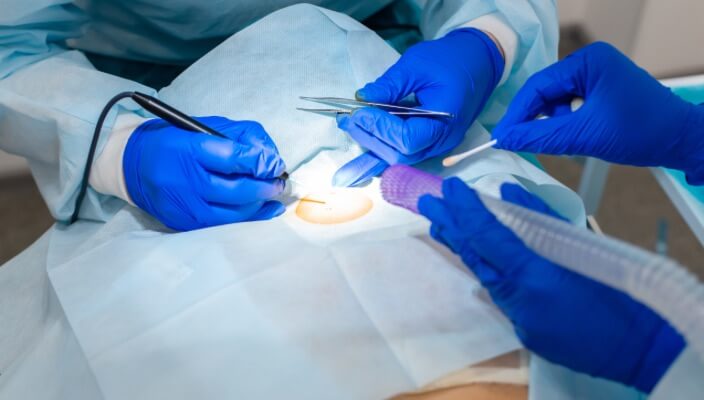
- Skin Cancer
- General Dermatology
- Skin Exams
- Sun Safety
Uncover the unparalleled benefits of Mohs surgery. Learn how this precise technique ensures minimal tissue removal while maximizing cancer removal rates, offering patients superior outcomes in skin cancer treatment.
Read More
- Skin Cancer
- Skin Exams
With skin cancer cases rising year after year, it’s no surprise that people are itching to learn more about this life-threatening skin disease
Read More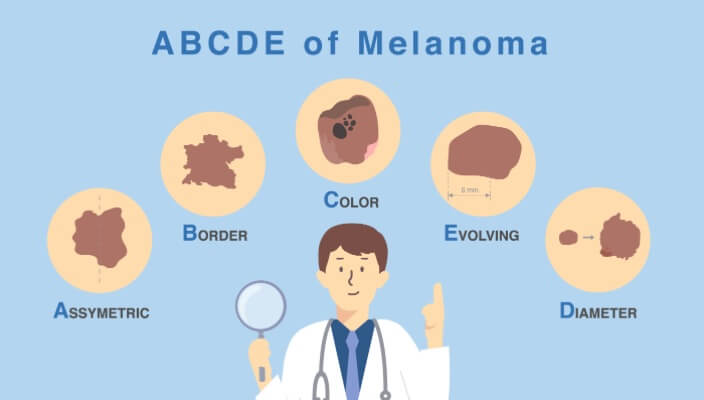
- Skin Cancer
- General Dermatology
- Skin Exams
Learn the ABCDEs of Melanoma, the deadliest form of skin cancer.
Read MoreFeatured Products
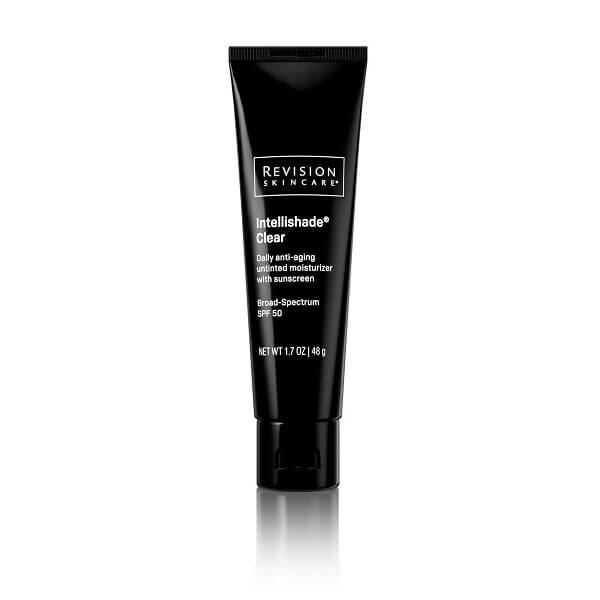
Revision Intellishade Clear Broad-Spectrum SPF 50
Correct, protect, brighten, and hydrate skin with this 4-in-1 daily age-defying untinted moisturizer with Broad-Spectrum SPF 50. Intellishade® Clear provides immediate and long-term hydration to the skin, reduces the appearance of fine lines and wrinkles, visibly brightens and evens skin tone, protects the skin from broad-spectrum UVA/UVB radiation, and reduces free radical damage from environmental stressors for healthy, beautiful skin. 1.7 oz / 48 g
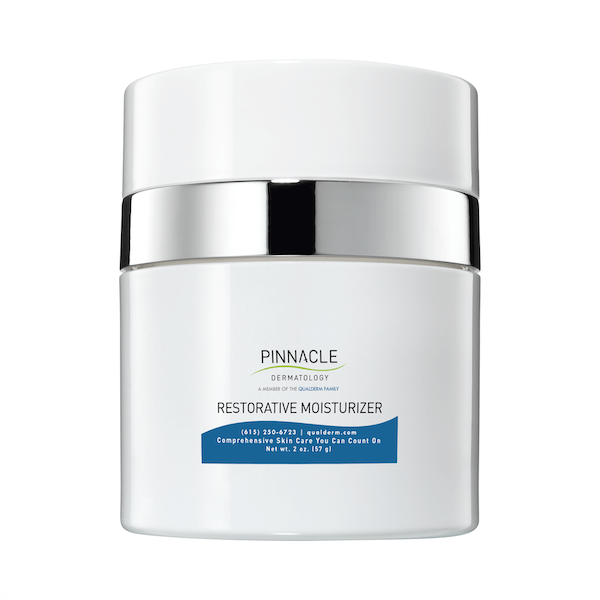
Pinnacle Skin Care Restorative Moisturizer
This moisture-boosting night cream fortified with ceramides, peptide, antioxidants and hydrators, nourishes dry skin back to optimum health, supports barrier repair and lipid replenishment. 2 oz / 57 g
